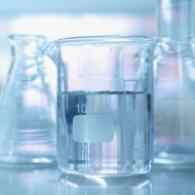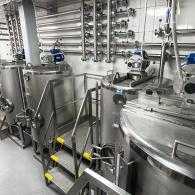This material is provided for general information purposes only and does not replace each user’s responsibility to assess the operational, legal and other requirements applicable to each facility.
Recovering and reusing the cleaning solution in the clean-in-place system is an effective method to optimize spend and reduce the environmental impact of the CIP process. Total water consumption is reduced, less thermal energy is required as cleaning solutions have already been heated, and there is less effluent generated, all contributing to reduced chemical, energy, water and water treatment spend. In addition, because heat is maintained in the reuse solutions, it will take a shorter time to reach the subsequent wash temperature setpoint, reducing the duration of the clean-in-place process and returning valuable time to production.
Essential Points to Note When Considering Clean in Place Chemistry Recovery and Reuse
Not all CIP protocols are suitable for reusing cleaning solutions. For example, cleanroom production, infant formula or products containing allergens. Carrying out a comprehensive risk assessment that maps out the potential cross-contamination points is crucial. The risk assessment should include:
- Product recipes, allergens and other contaminants
- Production schedules
- Production processes
- CIP cleaning chemistry
- Water consumption
- Energy consumption
- Any other site objectives such as total cost of ownership (TCO) or sustainability goals
It is not advised to recover the first rinse, but subsequent rinses may be reclaimed. In some cases, it is advantageous to reclaim some cleaning solutions to use as the pre-rinse for the next CIP cycle. In situations where heavy soil is present, only a partial reclaim is advised.
Recovered disinfectant/sanitizer solutions should not be reused as a disinfectant/sanitizer.
The solution cannot be used indefinitely and needs to be replaced when it is no longer effective in achieving a clean surface.
For how long can the solution be reused?
There is not a clear set of defined rules or parameters for how long a solution can be reused or when it should be dumped. It will depend on the specific processing environment, the cleaning active, how much soil there is, and the level of foam present. Too much soil leads to redeposition. Excess soil, fats and oils will cause soaps, foam and films which can leave residues and can cause pump cavitation.
The most practical approach is a visual observation of the solution appearance. A solution should be discarded when it is visually dirty. The solution should be regularly tested for microbial presence and dumped any time microbial contamination has been detected.
Caustic- and acid-based solutions can be reused for extended periods provided the solutions are reasonably clear or free of soil.
Acidic solutions should not exceed more than 50 cleaning cycles or should be dumped when the soil level reaches 1% as suspended solids (determined by filtration technique).
Alkaline solutions should be dumped when:
- Use reaches 30 cleaning cycles, or
- The deactivated alkali level reaches 4 - 5% as carbonate (determined by carbonate titration), or
- Chemical Oxygen Demand (COD) content is greater than 3000 mg/l, or
- Visual check shows obvious soil/high turbidity, or
- Lab sedimentation test reveals suspended solids content.
Chlorinated alkaline should be used for one day only. Higher temperatures and soil load reduce the chlorine concentration in the solution which impacts its effectiveness.








